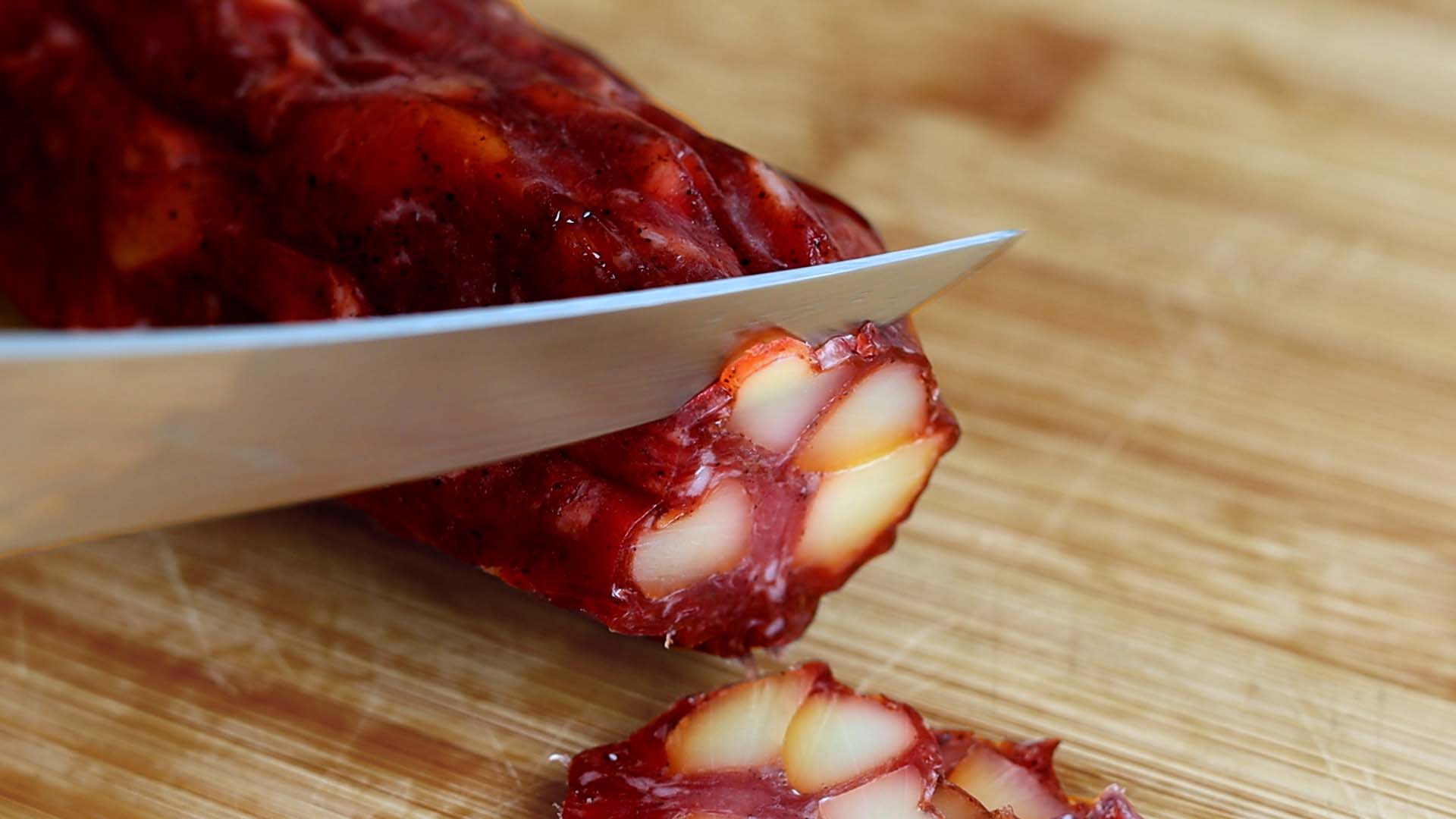
Homemade salami and cheese recipe. Usually eaten together on cold cuts platters, salami can be made with cheese. Cheese plays the role of fat, so salami can be made with leaner meats.
Continue reading Salame com queijo receita caseira
Homemade salami and cheese recipe. Usually eaten together on cold cuts platters, salami can be made with cheese. Cheese plays the role of fat, so salami can be made with leaner meats.
Continue reading Salame com queijo receita caseira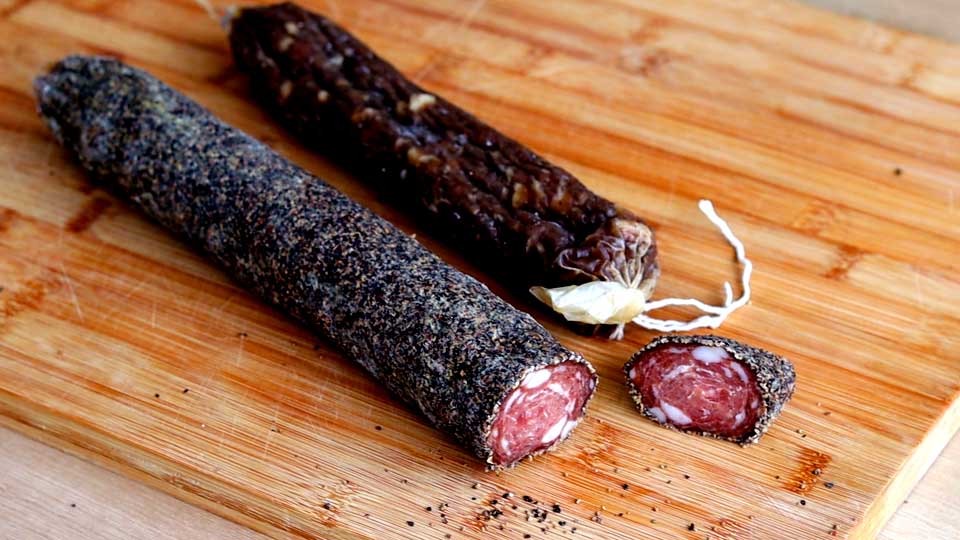
This salami was made using textile casing seasoned with peppers. Textile casing is a very easy way to apply a seasoned outer layer, or crust. In this case, textile casing was used with a crust of white and black pepper. The production process is similar to traditional salami, the only difference is the type of casing, or casing, used, which in this case is a special casing for this purpose.
Continue reading Salame com crosta de pimentas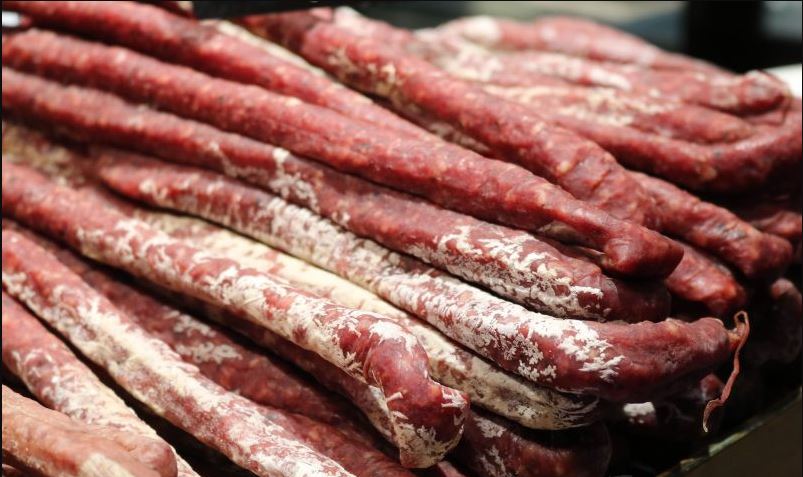
This is a typical sausage from Catalonia, one of the most traditional regions in Spain. It is thinner than traditional salami, made from pork, preferably Iberian, fed with acorns. It uses little or no seasoning. This way the flavor of the meat is brought out. Ideally, the production process should take between three and four months. The longer the curing time, the drier and darker red the Catalan fuet will be.
Continue reading Salame Fuet Catalão
Handmade, fermented salami, without a grinder and without casing, with a cashew nut and almond crust.
Continue reading Salame com crosta de caju e amêndoas, sem tripa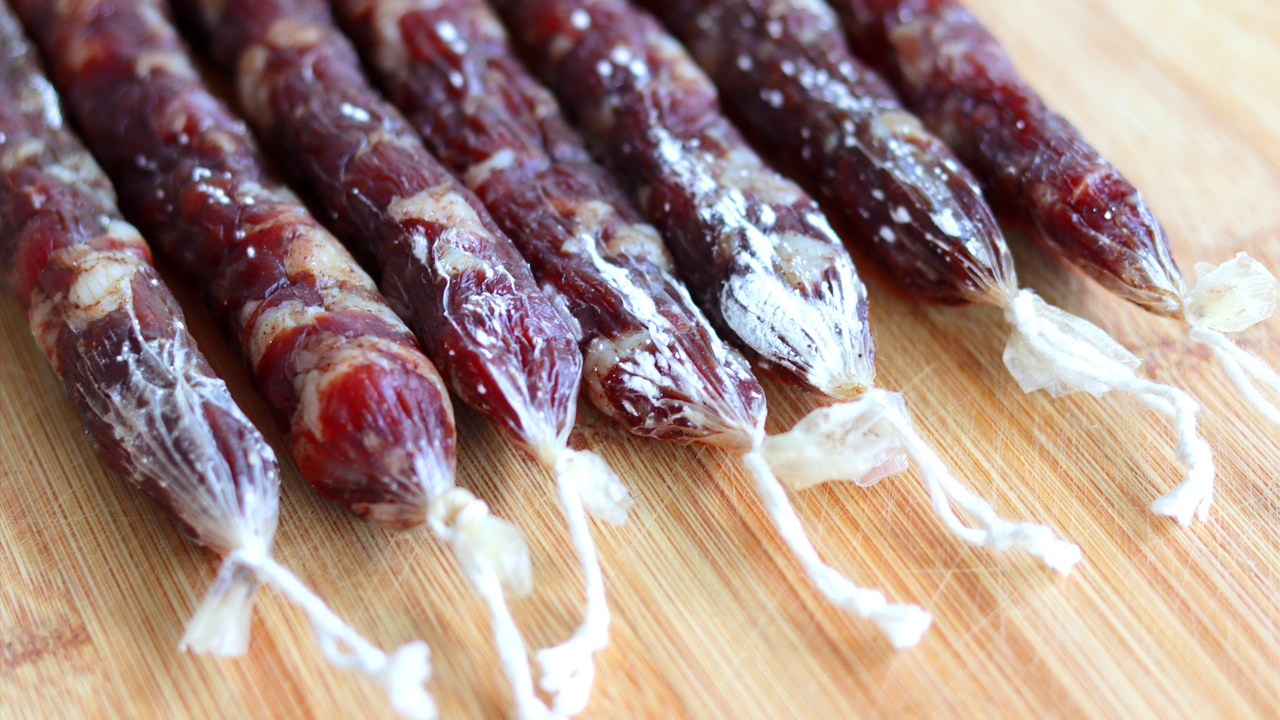
Want to make a salami? This recipe is the simplest to start on this journey. Salami is one of the simplest and most exuberant forms of meat processing. It's an alchemy that transforms a piece of raw meat into an extremely tasty and durable product. Creating a quality product by exposing a piece of meat to time, without any type of cooking, is fascinating!
Continue reading SALAME SIMPLES PARA INICIANTES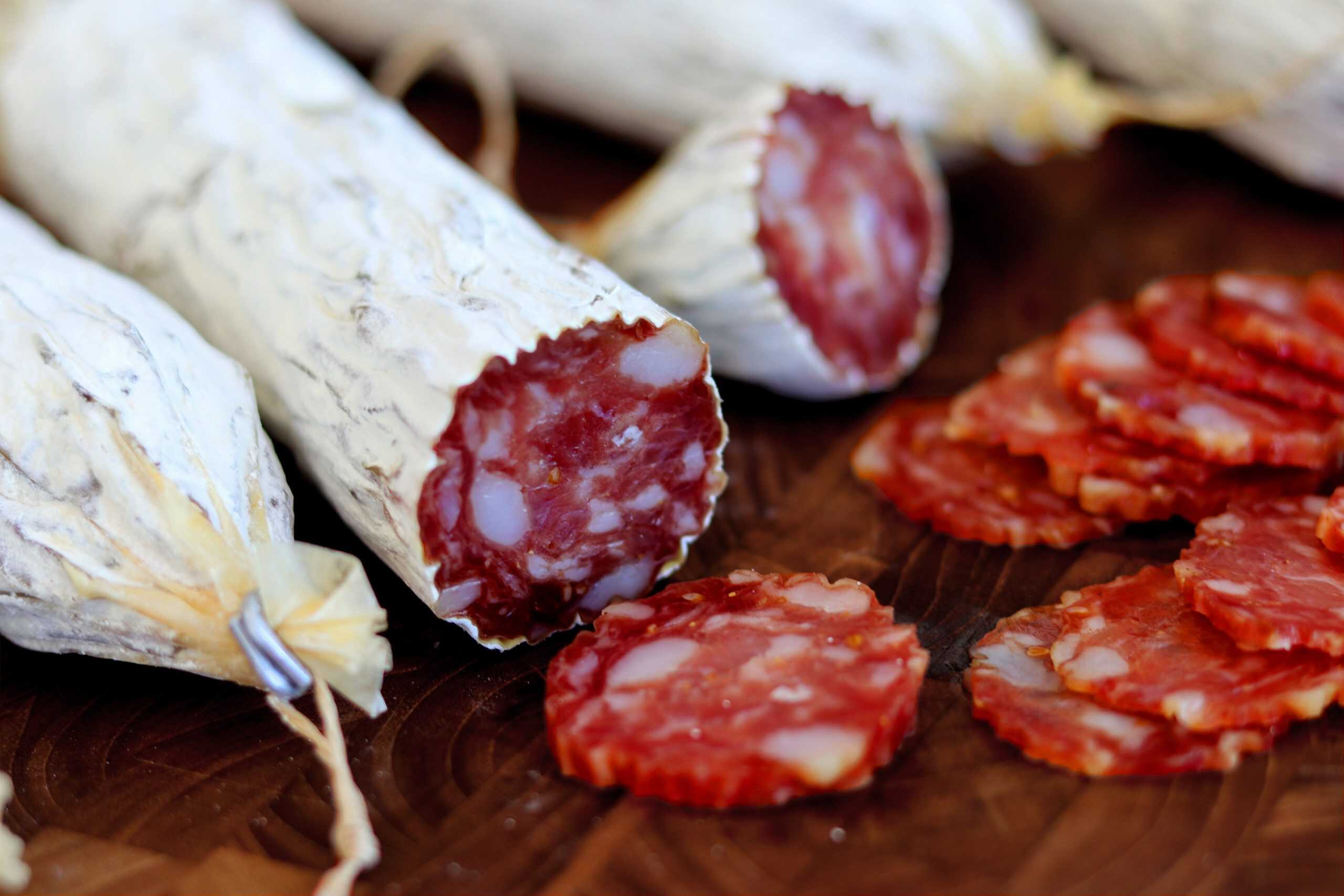
O Tuscan Salami is typical of Italy and is also known as finacchiona. Tuscan Italian Salami Finocchiona originates in the Middle Ages, between the 14th and 15th centuries. It is a salami that contains fennel, or finacchio in Italian, which is why it is also known as fenocchiona. It is a salami that is generally thick and has medium or long maturation. Fennel was initially used to replace black pepper, which was a much more expensive ingredient. The product became popular and is now produced in several regions of Italy.
Continue reading Salame Italiano Finocchiona
Recipe for spicy salami, smoked on the barbecue for an appetizer. In this recipe we made a salami with a very simple recipe, smoked on a common barbecue.
Continue reading Salaminho apimentado defumado na churrasqueira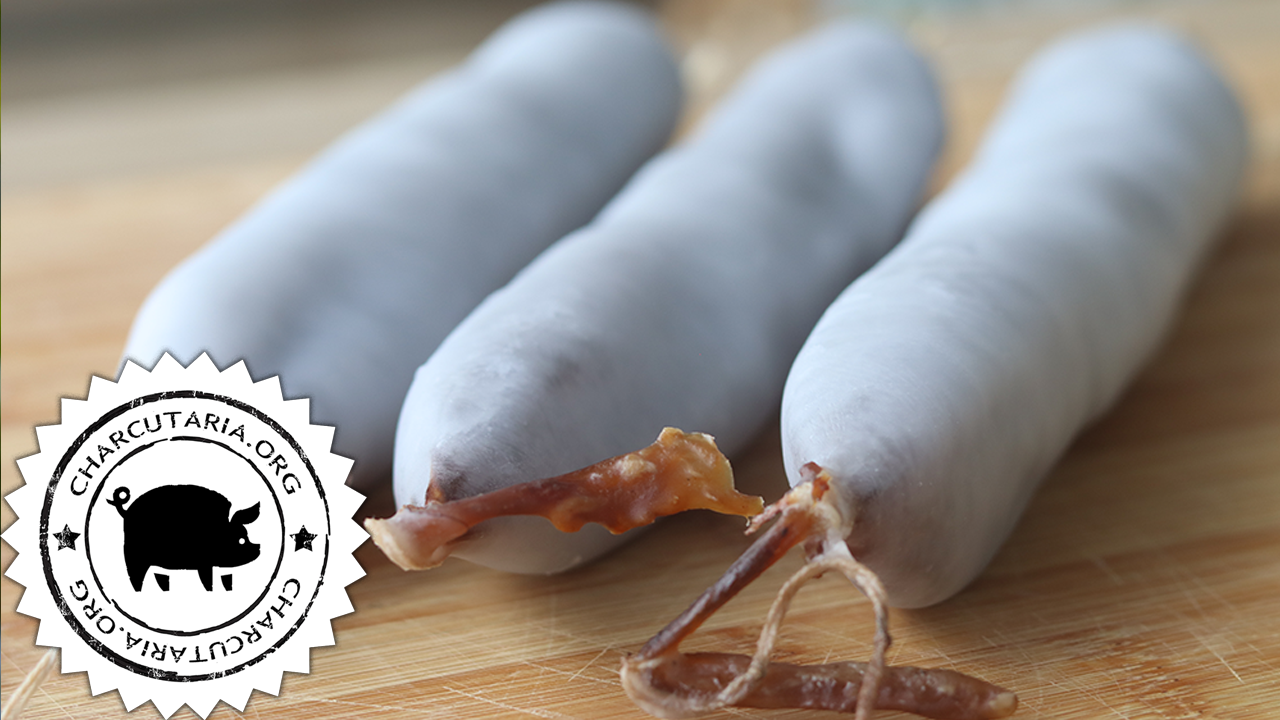
Preserving salami in paraffin is a very old technique for preserving salami and other matured sausages. Paraffin or beeswax can be used, the important thing is that the material used can be melted and applied to the finished sausage, so that, when it dries, it forms a perfect seal on the outside of the salami, protecting it from excessive moisture loss. and against contamination. It is similar to a vacuum, but with the added benefit of also protecting against light, which is one of the inducers of oxidation (rancidity).
Continue reading Salame conservado na parafina ou cera de abelha
This rustic salami was inspired by the traditional Portuguese salpicão, which is a sausage or, as they say in Portugal, sausage, made with pork loin, preferably from the Bísara breed, cut into cubes of approximately 5 cm, seasoned with wine, salt, garlic , bay leaves and pepper. After seasoning, it is left to marinate, or cure, for four days. Traditionally, salpicão is smoked and then aged, but in this variation it was made without smoking.
Continue reading Salame rústico embutido em fundo bovino e maturado por 51 dias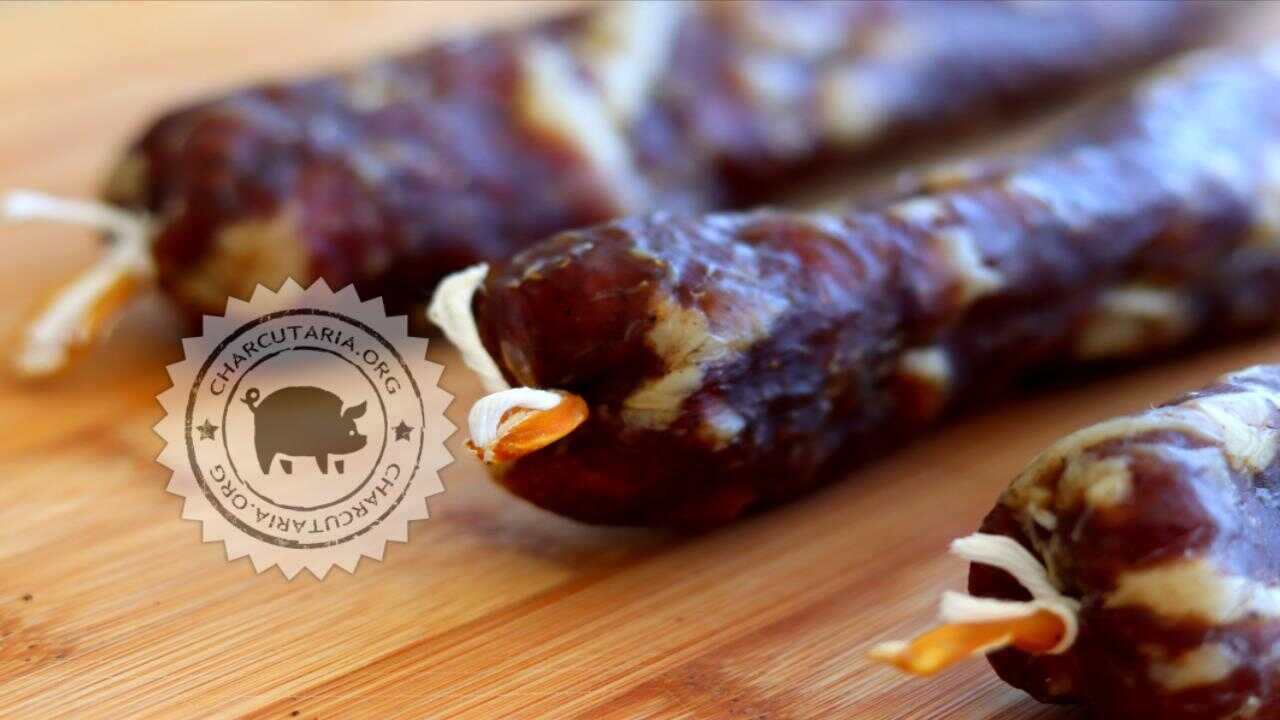
This salami was made for those who wish to produce homemade salami without any additives or do not intend to purchase equipment. Using things available at home it is possible to make great salami. The only additional ingredient that cannot be missing is tripe, which was straight beef in this case. I used a mini wine cellar, which I have at home, for the drying/maturation process.
Continue reading Salame feito em casa, sem equipamentos e sem aditivos